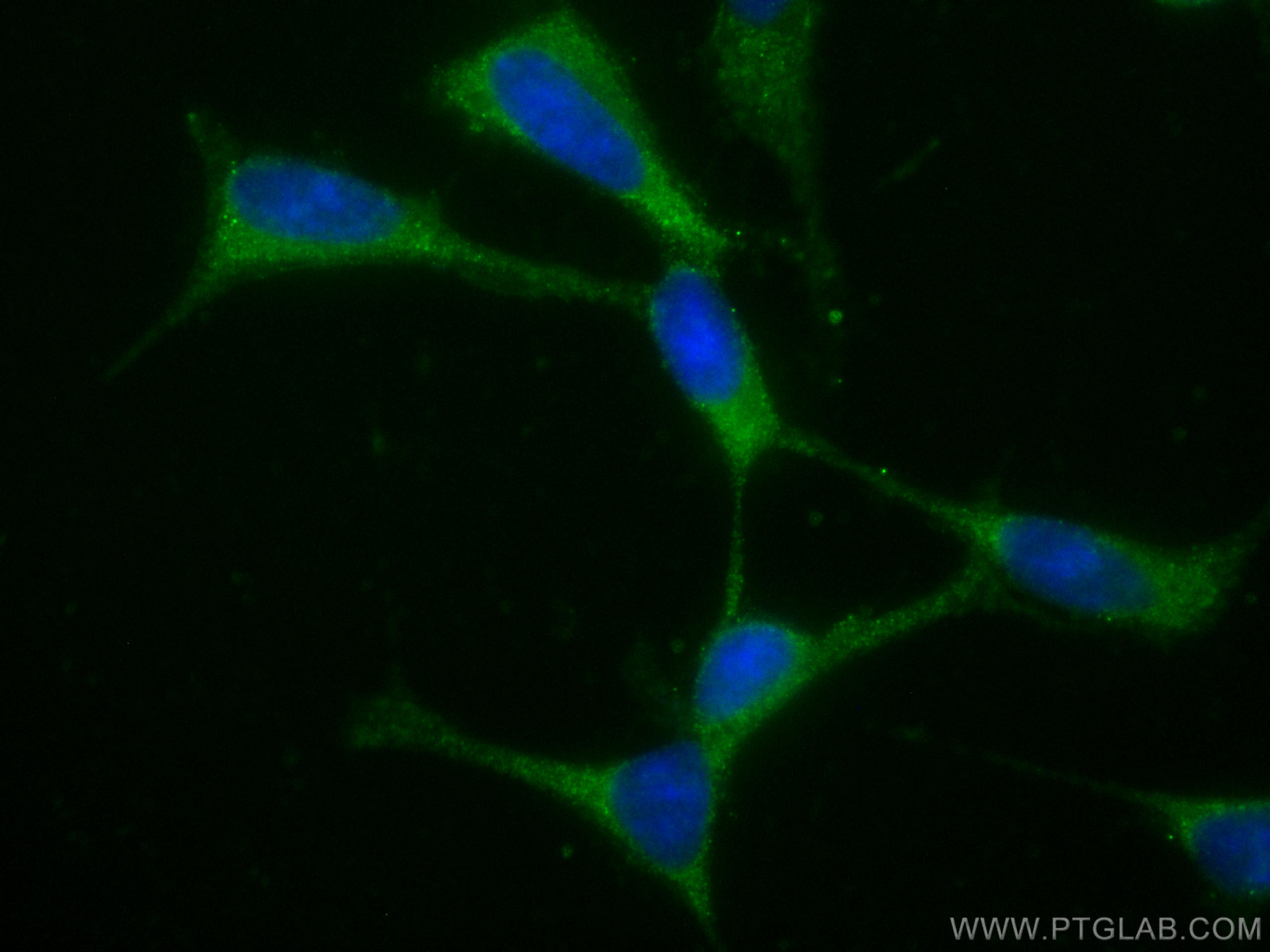验证数据展示
经过测试的应用
| Positive IF/ICC detected in | SH-SY5Y cells |
Planning an IHC experiment? We recommend our IHCeasy HTT Ready-To-Use IHC Kit. HTT primary antibody included.
For other applications, we recommend the unconjugated version of this antibody, 27206-1-AP
推荐稀释比
| 应用 | 推荐稀释比 |
|---|---|
| Immunofluorescence (IF)/ICC | IF/ICC : 1:50-1:500 |
| It is recommended that this reagent should be titrated in each testing system to obtain optimal results. | |
| Sample-dependent, Check data in validation data gallery. | |
产品信息
CL488-27206 targets Huntingtin in IF/ICC applications and shows reactivity with human, mouse samples.
| 经测试应用 | IF/ICC Application Description |
| 经测试反应性 | human, mouse |
| 免疫原 | Huntingtin fusion protein Ag25922 种属同源性预测 |
| 宿主/亚型 | Rabbit / IgG |
| 抗体类别 | Polyclonal |
| 产品类型 | Antibody |
| 全称 | huntingtin |
| 别名 | HD, HD protein, HTT, huntingtin, Huntington disease protein, IT15 |
| 计算分子量 | 348 kDa |
| GenBank蛋白编号 | NM_002111 |
| 基因名称 | Huntingtin |
| Gene ID (NCBI) | 3064 |
| RRID | AB_3084108 |
| 偶联类型 | CoraLite® Plus 488 Fluorescent Dye |
| 最大激发/发射波长 | 493 nm / 522 nm |
| 形式 | Liquid |
| 纯化方式 | Antigen affinity purification |
| UNIPROT ID | P42858 |
| 储存缓冲液 | PBS with 50% glycerol, 0.05% Proclin300, 0.5% BSA , pH 7.3 |
| 储存条件 | Store at -20°C. Avoid exposure to light. Stable for one year after shipment. Aliquoting is unnecessary for -20oC storage. |
背景介绍
HTT(huntingtin), also named as HD and IT15, belongs to the huntingtin family. HTT may play a role in microtubule-mediated transport or vesicle function. Defects in HTT are the cause of Huntington disease (HD) which is an autosomal dominant neurodegenerative disorder characterized by involuntary movements (chorea), general motor impairment, psychiatric disorders and dementia.
实验方案
| Product Specific Protocols | |
|---|---|
| IF protocol for CL Plus 488 Huntingtin antibody CL488-27206 | Download protocol |
| Standard Protocols | |
|---|---|
| Click here to view our Standard Protocols |
